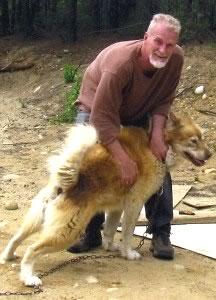As devoted pet owners, we strive to provide our furry companions with the best possible care, ensuring they lead happy and healthy lives. Central to this commitment is a well-balanced diet, which plays a crucial role in maintaining their overall well-being. However, just like humans, dogs can experience nutritional imbalances that may affect their health and vitality. Recognizing the signs of these imbalances early on is essential in addressing potential issues and ensuring your dog thrives. In this article, we’ll explore the key indicators of nutritional imbalance in dogs, offering guidance on how to spot these signs and take proactive steps to support your beloved pet’s nutritional needs. With a keen eye and a caring heart, you can help your dog live their best life, full of energy and joy.
Understanding Your Dogs Dietary Needs
As pet owners, it’s crucial to recognize the subtle indicators that your furry friend may not be getting the right nutrients. Dogs, much like humans, show physical and behavioral signs when their diet is lacking. Common symptoms of nutritional imbalance include:
- Dull, brittle coat – A healthy diet is reflected in your dog’s fur. A lackluster coat can suggest deficiencies in essential fatty acids or proteins.
- Weight fluctuations - Unexplained weight gain or loss can indicate an imbalance in caloric intake versus expenditure or the presence of insufficient or excess nutrients.
- Lethargy or hyperactivity – An energy imbalance can manifest as either unusual tiredness or excessive energy, signaling possible issues with carbohydrate or fat intake.
- Digestive issues – Frequent vomiting, diarrhea, or constipation can be red flags pointing to dietary problems.
Behavioral changes such as increased aggression or anxiety may also hint at nutritional deficiencies. Paying attention to these signs and consulting with a veterinarian can help ensure your dog’s diet supports their overall health and happiness.

Recognizing Physical Symptoms of Nutritional Imbalance
When your dog experiences a nutritional imbalance, their body often sends out clear signals. These physical symptoms can range from subtle to more pronounced changes in their appearance and behavior. Common signs include a dull coat or excessive shedding, indicating a potential deficiency in essential fatty acids or vitamins. You might also notice your dog’s skin becoming dry, flaky, or irritated, which can be a sign of lacking nutrients necessary for maintaining healthy skin.
Beyond skin and coat issues, there are other key symptoms to watch for:
- Weight fluctuations: Sudden weight gain or loss can signal imbalances in caloric intake or nutrient absorption.
- Lethargy: A lack of energy may point to insufficient protein or essential vitamins in their diet.
- Digestive problems: Regular diarrhea or constipation might indicate a fiber imbalance or food intolerance.
- Poor dental health: Bad breath or plaque buildup can result from inadequate nutrients supporting oral health.
Monitoring these symptoms can help you address any nutritional gaps early, ensuring your furry friend stays happy and healthy.

Behavioral Changes to Watch Out For
- Lethargy and Fatigue: If your normally energetic pup is suddenly lacking enthusiasm for their daily walk or playtime, it might be a sign of nutritional imbalance. Dogs need a balanced diet to fuel their adventures, and a lack of essential nutrients can lead to decreased energy levels.
- Increased Aggression or Anxiety: A change in behavior, such as sudden aggression or heightened anxiety, can sometimes be traced back to dietary deficiencies. Nutrients like Omega-3 fatty acids play a crucial role in maintaining your dog’s mental well-being.
- Excessive Chewing or Licking: While chewing and licking are natural behaviors for dogs, excessive tendencies can indicate an underlying issue. Nutritional imbalances might lead to skin irritation or discomfort, prompting your dog to chew or lick themselves more than usual.
- Changes in Sleep Patterns: Just like humans, dogs can experience disruptions in their sleep cycles due to nutritional deficiencies. If your dog is sleeping more than usual or struggling to get restful sleep, it might be time to evaluate their diet.
Monitoring your dog’s behavior closely can provide vital clues to their overall health. It’s essential to address these changes promptly, ensuring your furry friend receives the right nutrients to thrive both physically and emotionally.

Practical Tips for Restoring Nutritional Balance
When it comes to restoring your dog’s nutritional balance, taking proactive steps can make a world of difference. Begin by assessing the quality of your dog’s current diet. Opt for high-quality, complete dog foods that list a specific protein source as the first ingredient. Avoid foods with artificial preservatives, colors, or excessive fillers. You can also enhance their diet with fresh, dog-safe fruits and vegetables such as carrots, blueberries, and sweet potatoes, which provide essential vitamins and antioxidants.
- Consult with a veterinarian to create a balanced meal plan tailored to your dog’s specific needs.
- Monitor portion sizes to prevent overfeeding or underfeeding.
- Incorporate supplements like omega-3 fatty acids or probiotics, but only after professional advice.
- Maintain a consistent feeding schedule to regulate their metabolism and energy levels.
- Keep fresh water accessible at all times to support proper hydration and digestion.
Remember, every dog is unique, so what works for one might not work for another. Patience and attention to your pet’s response to dietary changes are key to achieving a healthy balance.

